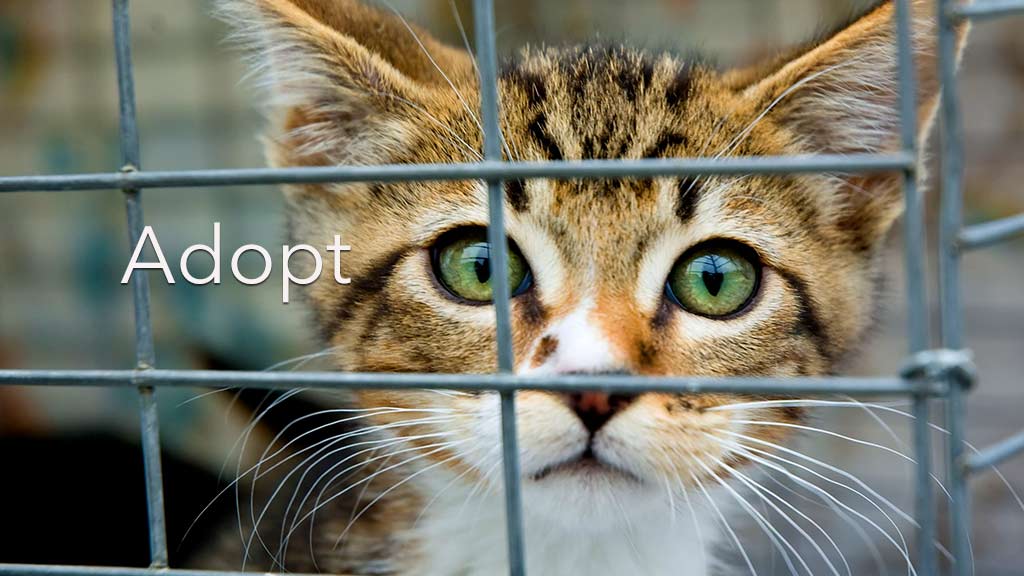
A recent story about a Washington State couple that lost their dog while vacationing in Montana is making its rounds in the news cycle. The husband and wife spent 57 days searching for their pet, sometimes with night vision goggles, before he was found.
The story sparked a great Q&A session with Animal Medical of New City’s Medical Director, Dr. Howard Gittleman on the topic of dogs and cats that run away.
Free Phone Consultation!
Need to talk to you one of our veterinary professionals?
Animal Medical offers FREE 10 minute phone consultations and answers your pet health questions!
Q: Why do pets run away?
A: There are 5 main reasons why dogs and cats runaway
Unfamiliar surroundings
This is what happened to the border collie from Washington State. The pet-owner couple was vacationing in Montana and the dog bolted from their hotel room; they believe because of a thunderstorm. Once the dog’s panic subsided, he found himself in an alien place without the comfort of the people he knew. He became fearful and skittish. Some runaway dogs will allow a stranger to call them over or take them into a car or a home. Not this dog. He was too afraid and rebuffed offers of food or shelter from those that encountered him.
The pet is in heat or smells another pet in heat
We see this all the time, especially in cats. Both male cats and dogs that have not been neutered have been known to travel for miles if they smell another cat or dog that is ‘in season’ or ready to be bred. Roaming, along with some health and animal husbandry concerns, is one of the major reasons we recommend that all dogs and cats have a spay or neuter procedure. Some owners have justifiable concerns about spaying or neutering their pet, but I would encourage them to call us at Animal Medical. We base our decisions on when and how to spay or neuter pets based on the latest scientific evidence. We also perform minimally invasive spay procedures that significantly reduce post operative pain and hastens healing time.
Fear
Like the pet in this story, fear from loud noises or large groups of people, can cause dogs and cats to bolt. Usually by the time that these pets are able to get their panic under control, they have traveled long and far enough to be confused about their whereabouts and how to find their way home.
Hunting Instinct
It’s very common for scent dogs like beagles, pointers, retrievers, and hounds to follow their prey’s scent to the exclusion of all other concerns including their pet owners and where the scent is leading them. These dogs can emerge from their obsessive hunt not realizing how far they’ve run or how to get back home.
Boredom
Finally, lots of pets end up missing because they are bored with their everyday surroundings and are lured beyond the yard, over the fence, or out the door by something more intriguing that lies beyond. Cats are especially prone to sneaking outside to engage their insatiable curiousity and hunting instincts. As a side note, many feline veterinarians, including those here at our Feline Gold veterinary practice, believe that many indoor cats suffer from boredom. If you are a cat owner and your cat is gaining a lot of weight or is already overweight, he or she may be eating out of boredom. Call us so that we can have a discussion with you on how to stimulate your cat physically and mentally and improve his or her overall mood and health.
Q: What are the chances of finding a lost dog or cat?
A: It depends on several factors.
First I’ll give you some statistics from an ASPCA study that was done in 2012 called the Frequency of Lost Dogs and Cats in the United States and the Methods Used to Locate Them. In the study, they found that:
About 15% of dogs and cats runaway from home
In their sample of around 1000 pet owning households, about 15% of dogs or cats were lost during a five year window of time. That means that out of every 10 households that own a pet, one-to-two can expect to have its pet go missing. The rate was not dependent on demographics.
Cats are less likely to be found once they run away
In the survey, 93% of the dogs were returned to their owners, but only 75% of cats were returned.
The best way to find a lost dog is to search your neighborhood
For dogs, searching the neighborhood was the best way to find the pet and return him or her home. ID tags were also important. 15% of dogs were returned to owners because they had some kind of visible ID. Surprisingly, while nearly all pet owners agree that an ID tag is important, only 33% of dogs and cats have one!
If cats are found, it’s typically because they return home on their own
Cats are much less likely to wear an ID tag and consequently 25% were never reunited with their family. When cats were lost, the ones that were most likely reunited with their families were the ones that returned on their own.
So to answer your initial question, the chances of finding a lost pet depend on whether your dog or cat has clear identification, how recently the pet was lost (the chances of recovery diminish over time), and whether you have the assistance of good neighbors who may be willing to help you find your pet.
Q: What can we do to prevent dogs and cats from getting lost?
A: Here are basics things every pet owner should do to prevent run away pets.
Spay or neuter your dog or cat
The chances that you pet will roam away are significantly reduced if you spay or neuter your pet. We recently addressed pet owner concerns around the spaying and neutering of pets in another article. Please reach out to us if you have concerns about this procedure.
Microchip your pet
Great story underlining the value of microchipping. This video states that the return rate of lost animals is much lower than the statistics we cite from the ASPCA study. We can not confirm the statistics cited in this video.
Microchips are rice-sized, painless, safe devices that we place underneath your pet’s skin. Recognizing the unarguable benefits of a microchipping, all the doctors and support team members at Animal Medical have microchips for their dogs and cats. Microchips have the ability to reflect a unique ID code when they are scanned, but pet owners must keep the information updated with the manufacture’s data center with certain chips. You can find out more about how Animal Medical of New City places microchips using this link.
Put an ID tag on your pet
You can purchase inexpensive ID tags online. Make sure that the tag includes your pet’s name and your cell phone or home number on it. Physical address is less important on a tag. You should also keep a rabies tag on your pet’s collar or harness proving that your pet is up to date on his or her vaccines. Rabies tags include the name of the veterinary practice that gave the rabies vaccine. If people call us and give us the number on the tag, and we’ve administered the rabies vaccine, we can connect the number to the correct pet owner and let him or her know that the pet has been found.
Outfit your pet with a GPS collar
This technology still has a ways to go in terms of total usefulness. Issues with Internet reception and battery life are the chief issues that scramble these products’ success, but keep your eye out. As technology advances, it’s likely that GPS collars will outshine all other pet tracking tools in the future.
Ensure your pet is secure
Ensure that your pet is securely crated or confined when there are loud noises, thunderstorms, or events like the Fourth of July. More pets runaway on the Fourth of July than any other day of the year.
When walking your dog, ensure that his or her collar fits snugly. A good rule of thumb is that you should just be able to get two fingers underneath your dog’s collar once it has been secured. If your dog is a puppy, make sure you adjust your dog’s collar as he or she grows. Keep in mind that dogs can slip out of collars however well they are fitted. If you have a dog that is especially nervous or skittish outside, it’s best to outfit him or her with a halter.
Double check doors and windows before you leave your pet at home. If you are taking your dog or cat in a car, never leave him or her unattended. Temperatures inside cars can climb very rapidly and cause your pet to overheat, or worse, to die. Leaving a car window open is not a solution. Open car windows will not effectively lower the inside temperature of the car and are a route of escape for dogs and cats.
Q: What should I do if I lose my pet?
A: This is what you should do if you lose your pet
Confirm that your pet is really missing
Many times pets aren’t lost; they’re just hiding inside of your home, so make a thorough tour of things.
Act right away
89% of lost pets are found in the first few hours of running away. As time passes, the chances for reunification diminish, so get started on your search immediately.
Call Animal Medical if you have a lost pet
If you send us a picture of your pet, we’ll put it on our Facebook page. Nearly 1000 Rockland County, NY pet owners engage with our Facebook page regularly, so getting your post on our Facebook page will alert a lot of the right people that they should be on the lookout. There’s also a Rockland County Missing Pets Facebook page.
Call all the veterinary hospitals in your area
Don’t just call Animal Medical of New City, call all the veterinary practices and alert them that you have a missing pet. On it’s website, the ASPCA states that you should reach out as far as 60 miles in all directions from your home.
If your pet is microchipped, contact the chip manufacturer
And alert them that your pet is missing. Companies like Home Again will automatically fax and email notifcations that your pet is lost to all area shelters and veterinary practices that use their chips and scanning devices. At Animal Medical of New City, we use an internationally recognized chip called Microfinder. Microfinder chips do not require an annual fee for inclusion in identification data bases.
Start searching the neighborhood
If dogs have run away due to boredom, they will usually take the path of least resistance. If there is a choice to go up a hill or down one, they will usually go down, not up. If there is a path in the woods, they will more often take it, rather than walk through heavy shrubbery or woods. If you make posters, place them on the poles near traffic stops and at intersections where people are likely to see them. Include a color photo of your pet. It is best to withhold one piece of identifying piece of information about your pet so that you can test whether or not people are being truthful if they tell you that they found your pet. Though I don’t know of any cases in Rockland county, some criminals look out for lost pet signs and try to seduce frantic pet owners into paying for information that will lead them to their pet.
Q: Do you have a list of organizations that I should contact if I lose my pet?
A: Yes. Here is a list of all the local organizations that you should notify if your pet is missing. Clicking on any of the names will take you to the organization’s website or Facebook page.







